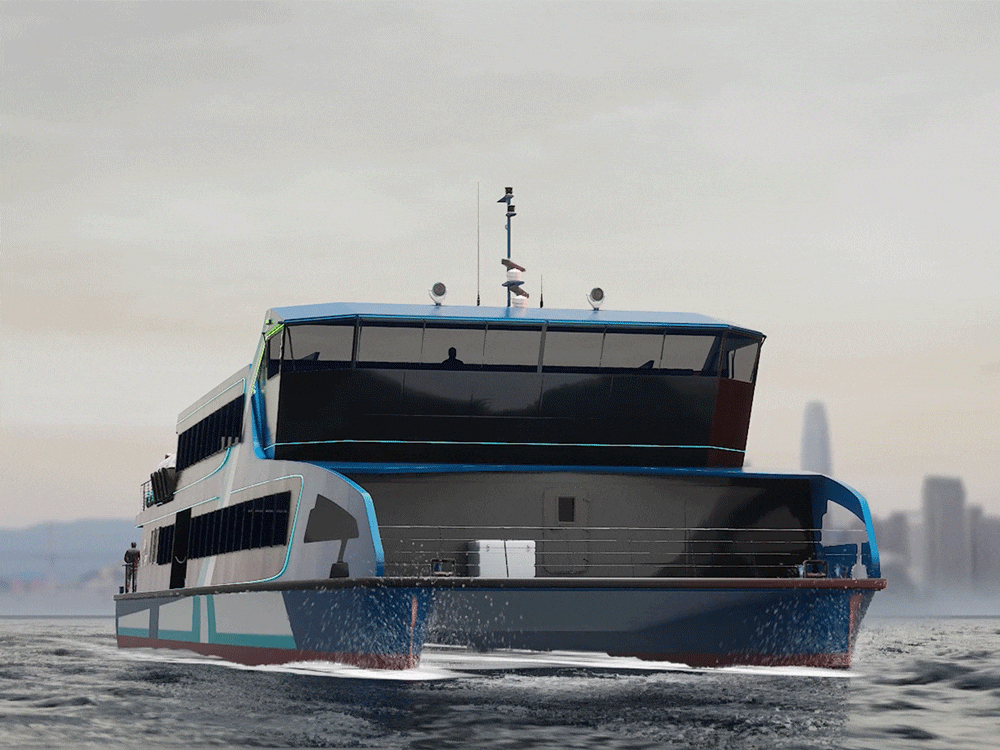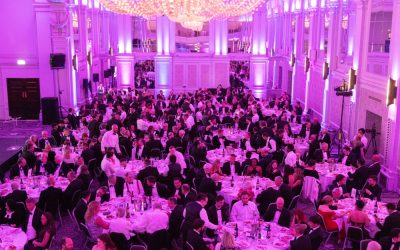Decarbonisation of the ferry sector continues to gain pace, with naval architect and designer BMT recently providing a preview of its forthcoming EF-500 all-electric passenger vessel concept. Developed to meet international demand for low- and zero-emission ferry services, the EF-500 concept was unveiled at the International WorkBoat Show in New Orleans, hosted between November-December 2023, accompanied by a 3D scaled model.
The e-ferry is perhaps best imagined “as a tailor-made ‘bike bus’ on water, seamlessly connecting riverbanks, enhancing cross-river links and serving communities emission-free,” explains Martin Bissuel, head of sales, commercial maritime at BMT. In addition to its 500-passenger and four-crew member capacity, the vessel will transport up to 20 bicycles – making its operations diesel-free in every aspect.
Although the emphasis of the big reveal at International WorkBoat was, unsurprisingly, on servicing the North American market, Bissuel adds: “The design is suitable, and is flexible, for operations around the world: its focus on all-electric, low-carbon emissions makes it relevant globally.” All the same, e-ferries are gaining popularity across the US – arguably much more so now than in the 2010s – as a cleaner, more sustainable alternative to traditional diesel-powered models.
Key locations of interest, for instance, include: New York City, where efforts are being made to electrify services between Staten Island, Manhattan and the Bronx; Portland, Maine, where the city authorities have pledged support for green transportation initiatives; and San Francisco Bay Area, California, where the Water Emergency Transportation Authority (WETA) is pushing to electrify its entire fleet by 2025.
The all-aluminium EF-500 will feature an overall length of 42.5m (or 41.9m on the waterline) and a moulded beam of 12m, and will draw 1.6m. The onboard batteries will provide a combined 2,200kWh of power, feeding a pair of 770kW motors and enabling a service speed of 18knots. This capacity will be ample to enable a range of one hour at 18knots, or 40 minutes when operating at its top speed of 20knots. Bissuel explains that the specific choice of batteries and motors will hinge on the end user’s requirements and preferences, given their areas of operation.
The EF-500 has been designed with a low-wake hull, for minimum disruption to coastal routes and inland waterways as well as enhanced passenger comfort and reduced drag and energy consumption. Low-wake hulls also make it easier for crew to manoeuvre with greater precision, to reduce the likelihood of collisions with harbour infrastructure and/or other vessels.
As of December 2023, Bissuel could confirm that a number of operators had expressed an interest in the EF-500 design, adding: “We expect to be building the first of class very soon.” He continues: “Crafting greener ferries involves meticulous consideration beyond blueprints, encompassing passenger experience, adaptability to future transit changes and technological advancements. BMT’s electric ferry not only aligns with economic and environmental goals but positions itself as a pioneering project embracing innovative vessel operation and contemporary design trends. All these elements contribute significantly to fostering a positive inclination towards ‘purchase’.”






